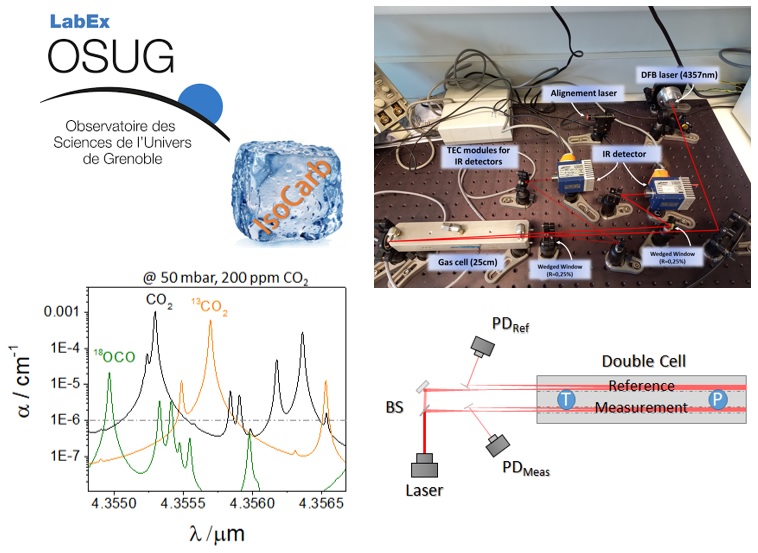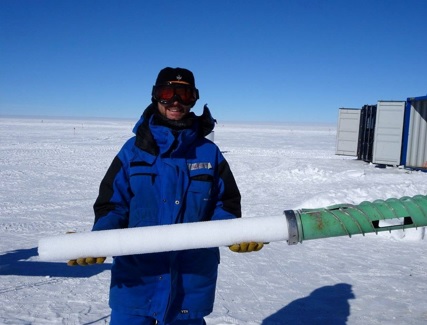Ice core
Study of Climate/Carbon Cycle Coupling
The Millennial variability of atmospheric CO2 during the MIS6 period was retrieved with unprecedent resolution and precision during the PhD Thesis of J. Shin (2015-2019). Abrupt changes in atmospheric CO2 were also identified during glacial and early interglacial in the MIS10 and MIS11 periods from the work in collaboration with the University of Bern (Nehrbass-Ahles et al. Science, 2020).
This work will now move towards the measurement of the δ13CO2 in ice-core, which would allow to study further in detail the coupling between climate and carbon cycle by looking at the isotopic variability during rapid past CO2 changes.
This will be done in the frame of the LABEX OSUG "IsoCarb" Project. The crushing system for ice core samples will be improved and automatized for improving the measurement capability, and fast and high precision δ13CO2 measurements on small-size air samples will be performed using a novel mid-IR optical spectrometre under developpement in collaboration with our collegues at the LIPhy laboratory in Grenoble.
The ANR project BIOCOD (BIOlogical productivity changes and their leverage on the CarbOn cycle during past Deglaciations) will start in January 2023 and will bring together the expertise of 4 french laboratories (GEOS, LASCE, EPOC and IGE) for better constraint past changes in the biological productivity of the Earth, which is up today very poor documented.
People involved :
Erwan Negre (IGE), optical spectrometer
Samir Kassi (LIPhy) , optical spectrometer
Gregory Test (IGE) , dry extraction system
Romain Duphil (IGE) , design of the new mill cells
Emilie Capron (IGE) , ice core data interpretation
Amaelle Landais (LSCE) , ice core data interpretation
Stephanie Duchamp (GEOPS) , sediments (PI of BIOCOD)

Sulfur isotopic ratio
I am involved in the measurement of sulfur isotopic ratio of sulfates in ice core, by performing a spectroscopy measurement on the H2S molecule to which the sulfates are converted into. The optical spectrometer is working in the near-infrared region using the OFCEAS technique, and is providing precisions of 0.08 ‰ for the δ33S and δ34S isotopic signatures.
People involved
Joel Savarino (IGE), isotopic geochemistry
Erik Kerstel (LIPhy), optical spectrometer
Oldes Ice Challenge
Today, the oldest ice core record available is the one from the EPICA (European Project for Ice Coring in Antarctica) coring concluded in the Austral summer of 2004/2005 and allowed a past climate reconstruction back to 800,000 years. Today, the Beyond Epica -Oldest Ice project (BE-OI) has a further challenge : to reach the 1.5Myr, allowing to covere the Mid Pleistocene Transition where glacial/interglacial cycles changed from a 40,000 to a 100,000 yr cyclicity.
In this project I am involved in the “New Methods” as well as in the “Gas” consortium. The drilling operation started during the season 2021-22, and is today ongoing.

 La fédération
La fédération Intranet
Intranet









